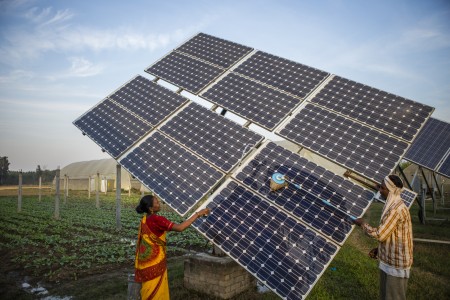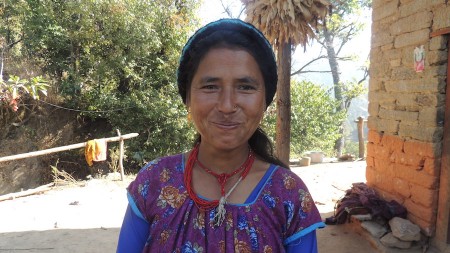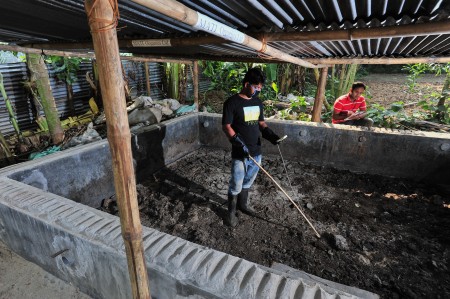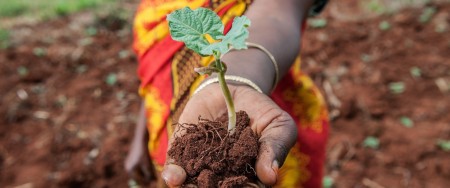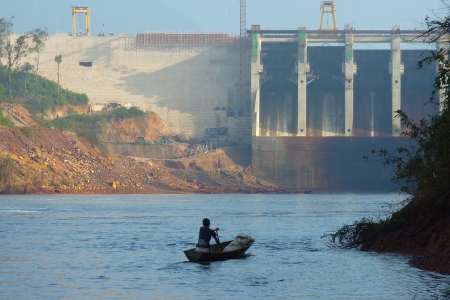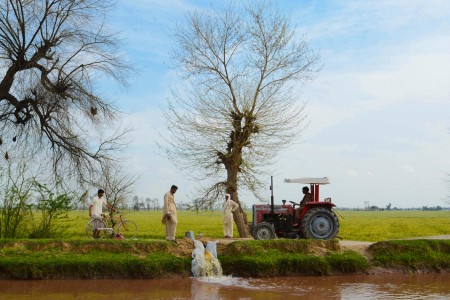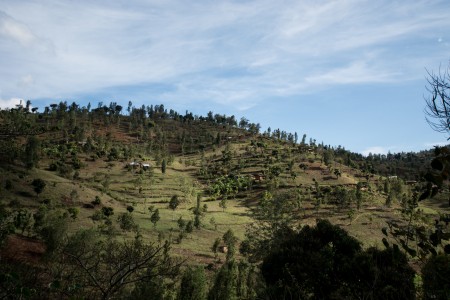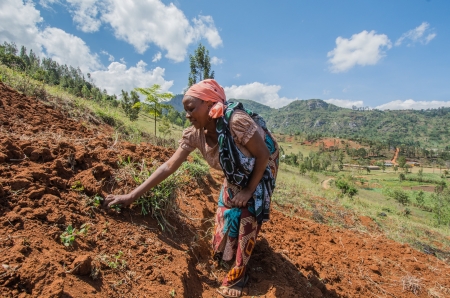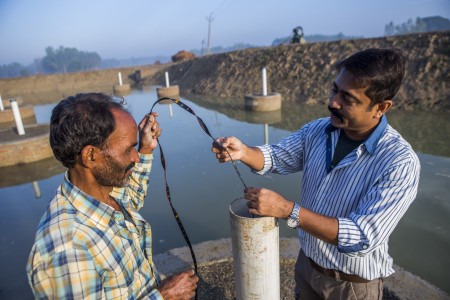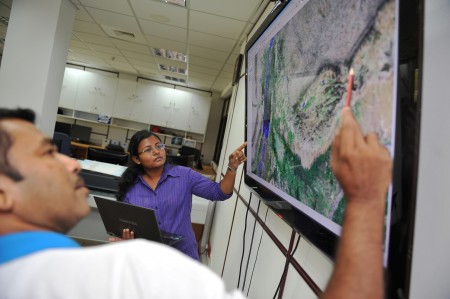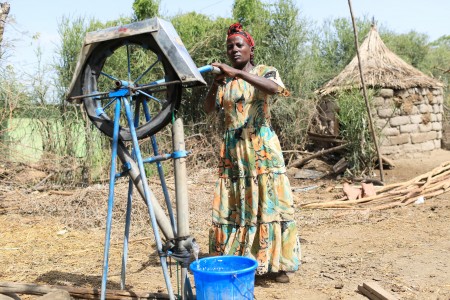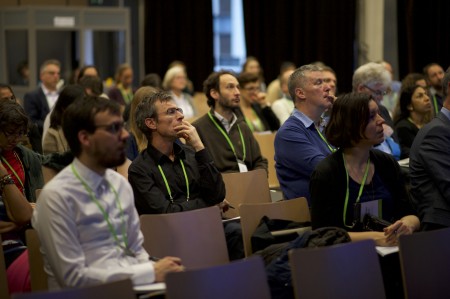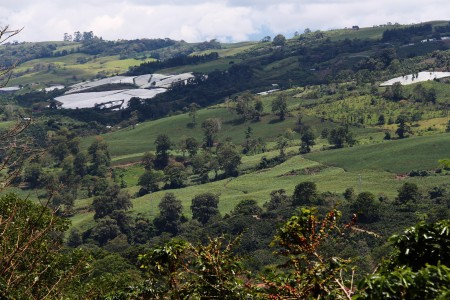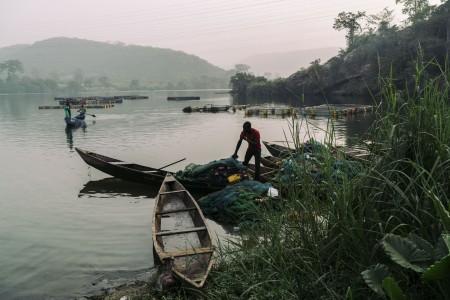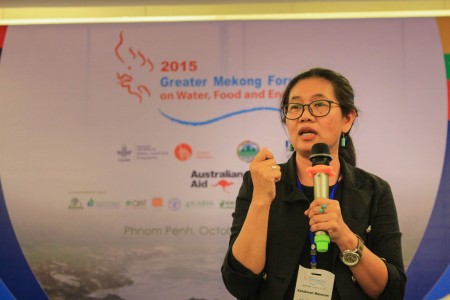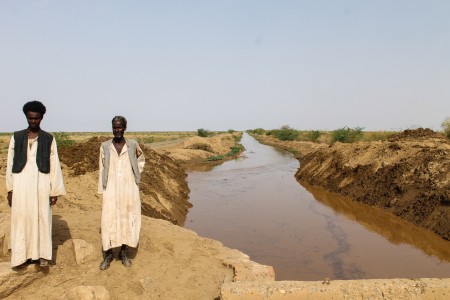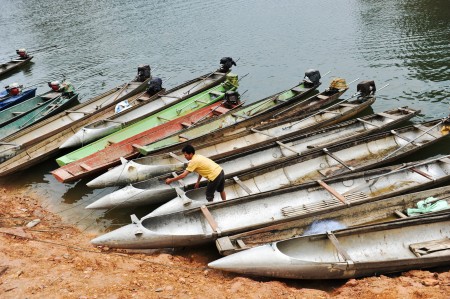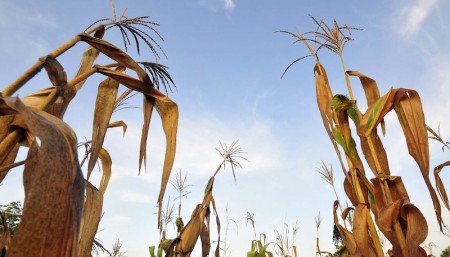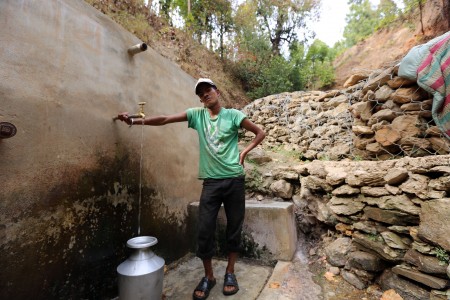The WLE 2015 Annual Report > Engaging with the global agenda

Influencing and contributing to the sustainability agenda
The launch of the Sustainable Development Goals (SDGs) in September 2015 marked a historic commitment to further strengthen sustainability across all levels of government, development, and the private sector.
The CGIAR Research Program on Water, Land and Ecosystems (WLE) has played an active role in shaping many of the SDG indicators and contributing to national implementation plans. The program has employed three main approaches to engaging in the establishment of targets and indicators over the past two years.
The first is through UN processes where WLE, through the International Water Management Institute (IWMI), has proposed or assisted in the final formulation of targets under Goal 6, regarding water and sanitation. WLE is working through the UN-Water Global Expanded Water Monitoring Initiative (GEMI), which is funded by SDC. A large part of this work is operationalizing SDG plans at the national level by participating in the GEMI “proof of concept” initiative, which tests the implementation of Goals 6.3 6.4, 6.5 and 6.6 in Uganda, Peru, Senegal, Jordan and the Netherlands. IWMI in particular is closely involved in the Ugandan case study and is using the data generated there to examine the ways that the information can be reported in an integrated way, linking water resources to food security and agriculture.
The second avenue has been through the Sustainable Development Solutions Network. Researchers from the World Agroforestry Center (ICRAF) proposed five key principles for implementing a decision analysis approach that were published in Nature:
- Replace targets with measures of return on investment: decision makers should invest where the likelihood of positive returns for people and environment are the highest
- Model intervention decisions: instead of starting out by defining indicators, consider the interventions needed to reach a certain goal first, then identify relevant indicators Integrate expert knowledge: expert knowledge can help fill gaps and improve decisions where data is sparse
- Include uncertainty in modeling activities: considering the unknown, including social and behavioral factors, is key to making sound assumptions
- Measure the most informative factors: don’t waste money measuring and tracking indicators that have little relevance
The third approach is to carry out research on relevant SDG processes. For example, in Ghana, WLE is rolling out the Mapping Ecosystem Services to Human Well-Being (MESH) model. This integrative modeling platform calculates and maps ecosystem service supply under different landscape management scenarios. MESH comprises built-in scenario generation tools, multiple ecosystem service supply evaluations, visualization of output maps and automated reprogramming functionalities. The Volta Basin Authority is testing the model’s usefulness in supporting implementation of its 2012-2025 Strategic Action Programme (VBA SAP). The Volta Basin Assessment serves as the baseline documentation of the state of natural resources in the region.
Agriculture 2.0:
towards a global revolution
for sustainabilitywater, land and ecosystems research highlights
2015 – 2016
A message from Johan RockströmWLE Steering Committee Chair
Agriculture 2.0
Current farming practices use 70 percent of the Earth’s fresh water, degrade 40 percent of land and contribute to 30 percent of greenhouse gas emissions.
But there is a better way: putting sustainability at the center of our food systems will not only reverse climatic degradation, but also accomplish the productivity that is necessary to feed 9 billion people by 2050.Sustainability is not just a necessity. It is an untapped opportunity for improving the livelihoods of male and female smallholders farmers, ensuring the productivity of the land into the future, and better harnessing the services provided by our ecosystems.
The CGIAR Research Program on Water, Land and Ecosystems (WLE) is doing its part to make the sustainable intensification of agriculture a reality by producing evidence-based solutions for water and land management via partnerships that span nationalities, sectors and disciplines.
We invite you to explore highlights from WLE’s work below.
in 2015 wle: field tested 62 technologies and natural resource management practices, helped 125,000 farmers to apply new technologies or management practices, supported improved technologies or management practices on 2.5 million hectares
Solutions for sustainable intensification of agriculture
In 2015 WLE: established 41 multi-stakeholder platforms and influenced 200 policy processes
Engaging with the global agenda
Practical approaches to regional problems
WLE in 2015 had 110,000 website visits and 43,000 views on CG-space and published 141 ISI publications and 94 open access publications
